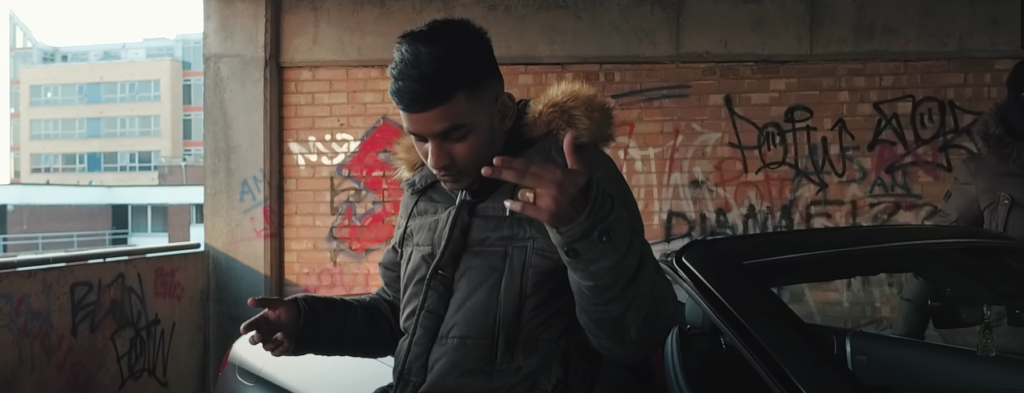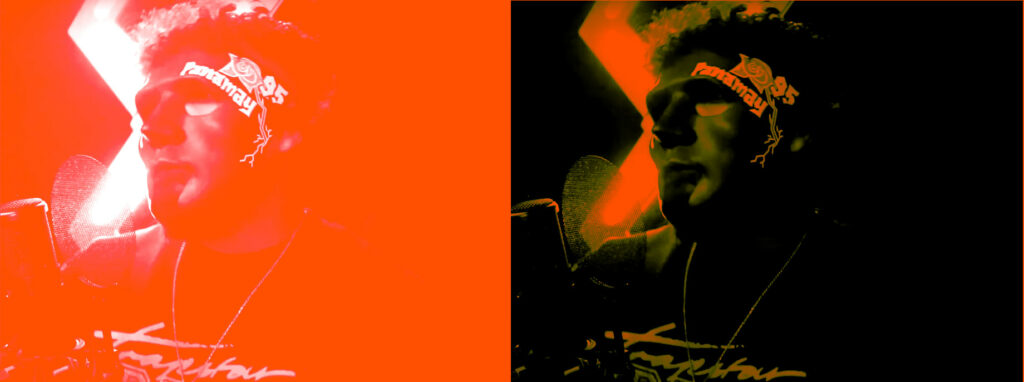Eelam Style: The rise of Tamil rap
Tamil rap has become a vital voice for a community displaced by war and oppression. Alex Astruc meets some of the MCs carving a distinct niche for themselves in the UK hip hop scene.
Jeffrey Boakye once described grime as a, “punkish scream of discontent.” For Tamils fleeing persecution and the brutalities of the Sri Lankan civil war, which claimed over 100,000 majority Tamil lives, discontent forms a backdrop to their displaced existence in the diaspora. Since the start of the struggles in the 1980s, Sri Lankan Tamils have spread across the globe, and the UK is home to the second largest number of Sri Lankan Tamils outside of Sri Lanka. The struggle for Tamils, however, has not stopped, and Tamil communities in both Sri Lanka and abroad are still fighting and protesting against the injustices of the civil war and their aftermath.
Whilst there are Tamil communities across the UK, many have settled in the North West London boroughs of Harrow and Brent, which have subsequently become a hub for up and coming Tamil rappers carving out a space for themselves in the UK hip-hop scene. To understand the Tamil rap scene as it stands right now, I’ve caught up with three rappers from the area, Panamay, Clich-A and Grxde A, who are all helping to bring the Tamil rap scene into the limelight.
Tamil communities in the UK are often close-knit and as Panamay describes, his introduction to rapping was from flat parties with the Tamil community at his uni. “My mates would just play beats and try to rap. It was never a serious thing but one time I was like, ‘yeah, maybe I’ll give it a go.’”
Since then, Panamay and fellow Tamil rapper Theva set up the collective and label TamilGrime, which has released several tracks and racked up hundreds of thousands of plays, becoming one of the central pillars of the burgeoning Tamil rap scene. Panamay’s lyrical dexterity is evident, and unlike many from the scene, Panamay only raps in what he refers to as ‘proper Tamil’. Tamil is one of the oldest languages in the world, and as Panamay himself relates, “To get the rhymes, it’s not that easy.”
Panamay traces his linguistic capabilities back to listening to traditional Tamil songs as well as contemporary Tamil music coming out of Sri Lanka and global Tamil diasporic communities. Panamay’s decision to rap in ‘proper Tamil’ makes his music stand out from the rest of the scene, with most rappers from the scene rapping in English or ‘T-english’, which Clich-A describes as a mixture of the two languages often spoken colloquially within Tamil communities. Whilst Panamay’s lyrics are cryptic to an English speaking audience, tracks such as ‘Vedi Vedi’ employ the distinctly British sounds of UK drill, and it’s refreshing to see that the Tamil language is alive and well whilst seamlessly interweaving with contemporary British sound cultures.
With other tracks coming out of the scene, this cross-pollination manifests in the sonic features of the music rather than the lyrics. Grxde A’s latest single, ‘Saved by the Bell’, samples a popular Tamil song layered over a more familiar sounding drill beat. Grxde A described how it’s important to bring Tamil sonic elements into his music, “as it allows me to bring the Tamil culture into the UK rap and drill scene.” The syncretic sounds of Tamil rap thus serve to keep traditional Tamil sound cultures alive, whilst raising the voices of Tamils and propelling them into the limelight.
Whilst Grxde A notes the importance of using Tamil references to connect with Tamil listeners, Clich-A describes how his music is, “for everyone, international, not just Tamils – no way. There’s no colour when you make music.” It’s clear the hybridisation going on in the Tamil rap scene serves to promote Tamil artists not just amongst the Tamil communities but also across an international stage. Tamil rappers attract listeners across the world, especially in Australia and Canada, which are also home to large communities of Sri Lankan Tamil communities.

Grime and drill are often connected to criminal activity, with references to gang culture forming a large part of their lyrical content, and Tamil takes on these genres often revolve around similar lifestyles. In areas such as Harrow, gang culture is rampant among Tamil youths, and its influence is evident in the lyrical content of the music released. Panamay explains that he mostly raps about, “Road stuff, ‘cos yeah, the majority of my [Tamil] friends are roadmen. All of this music is based on gangs and shit. We ain’t saying it just for the music.” This gang lifestyle has led Panamay to wear a mask to protect his privacy, as he explains that he would feel unsafe if people knew his identity.
“The problem is, you don’t know who in that Tamil restaurant has a problem with you. They just make a phone call and shit could hit the fan.”
Portrayals of this type of lifestyle are typical of drill and grime, and it’s no surprise the music produced by the Tamil youths involved in gang crime is as aggressive in both its lyrical and sonic content as mainstream drill tracks.
As Panamay notes, traditional Tamil values are not ones which would promote a lifestyle involving the drug trade and violence, and Panamay is yet to tell his parents that he makes music, despite his tracks racking up hundreds of thousands of plays.
“I’m literally just talking about violence and the wrong stuff,” he says, “and for Tamils it’s a big taboo.”
Family pressure certainly influences the musical output of Tamil musicians in London, and with many of these artists’ parents being first generation migrants fleeing brutal conflict, primacy is often placed on obtaining stable sources of income, rather than pursuing music.
Grxde A says, “My parents know I do music and they’re fine with it because I balance it with my day job. If I was to pursue music full time, then traditional values would come into play because they feel that relying on music full time is too risky.”

It’s critical to note the difficult circumstances the Tamil community have faced in the UK. Whilst Harrow as a borough is home to the prestigious Harrow School and neighbours the leafy, affluent borough of Ealing, many localised areas are home to serious economic deprivation, with two areas in the borough falling within the 20% most deprived areas in the country. The inequality, as in many London boroughs, is extremely palpable, with affluent and deprived areas often crammed together and overlapping. With levels of deprivation such as this, coupled with a lack of employment opportunities, catalysed by systemic and institutional racism, it is unsurprising that Tamil communities of North West London have seen a rise in gang related violence and serious crime.
Harrow-based Clich-A’s lyrics are strikingly conscious and touch on a plethora of significant and topical issues, including the violence occurring within Tamil communities. He’s deeply critical of this rise in Tamil on Tamil violence saying, “There’s kids killing kids everywhere, Tamils killing Tamils. You go to Tamil ends and Tamil man will ask you where you’re from, but they’re not asking any Black yutes. Why? Why are we beefing each other?”
Tamil communities fled Sri Lanka en masse after the beginning of the civil unrest in the 1980s, and since then have formed a global community. Tamils are all over the world, and after having fought for the right to live without fear of persecution in their homeland in the north of Sri Lanka, Clich-A finds it deeply saddening to see Tamil youths in the UK divided. “I’ve never beefed no Tamils in my life cos I don’t want to, that’s my people. We came from a place where they’re killing our brothers and we came over here and we’re killing each other – it doesn’t make sense.”
Whilst Clich-A largely avoids speaking on these issues in his releases, videos of his freestyles on Instagram have attracted significant attention, especially his freestyle released on the 10th anniversary of the Mullivaikkal massacre that occurred in the final stages of the civil war in 2009. Whilst many Tamils are divided on the role of the LTTE (The Liberation Tigers of Tamil Eelam, or The Tamil Tigers) in the war, Clich-A notes, “There was a time when we were united, but now it feels like everything’s falling apart. People just don’t wanna see each other win and it’s sad to see it because the people that we flag up, what did they die for? For us to fight [amongst ourselves]?” Referring to the Tamil soldiers who fought and died for freedom from state persecution, Clich-A touches on a sentiment that can be felt throughout the Tamil community. Many are still fighting for justice after the Sri Lankan government’s genocidal actions towards the end of the civil war, and their continued commitment to covering up the atrocities committed.
This feeling can be seen in the music of many of the Tamil rappers coming through at the moment, with Grxde A saying, “I’m a Tamil whose parents had to migrate in the first place because of the civil war, so it’s important I bring this up in my music wherever possible to educate the younger generation – other Tamils and non-Tamils who are unaware.”
However, this approach of raising awareness of the historic and current persecution of Tamils is at odds with the gang lifestyles depicted in some of the more openly violent and aggressive areas of Tamil rap. For example, Panamay doesn’t feel that his drill influenced style and violent lyrics provide the right platform to promote awareness on Tamil persecution. “I’m a supporter of that, but I don’t think I’m the right person to portray it. When we were doing music videos, a couple of my mates tried to bring in the LTTE flag and I was like, ‘bro don’t do that, ‘cos we’re portraying this roadman life and that’s something that will put [the LTTE] down.’”

Whilst the aftermath of the Sri Lankan conflict’s brutalities and injustices remains divisive, it’s crucial we are seeing the second generation of British Tamils making their voices heard. The “punkish scream of discontent” Boakye referenced is palpable in the Tamil rap scene, and it’s crucial to remember the history of oppression that has given rise to the British Tamil music we hear today. Tamil rap is a much-needed addition to the wider UK hip hop scene, whilst also providing a means of escape from the deeply challenging and hostile environments many of the rappers are coming from.
Whilst I’ve focused on a small selection of North West London based Tamil rappers, there are countless others across the capital and the country making their voices heard and propelling Tamils into the limelight. Beyond the UK, connections are being forged between diasporic Tamil communities around the world. As Panamay points out in reference to fellow Tamil rapper Inthu, who is based in Switzerland, “They’re always welcoming me, and it’s that friendship you build through music which is such a nice thing. We’ve got Tamil communities all over the world.”
It’s awe-inspiring to see a marginalised and persecuted group of people rise from oppression and genocide, to a position where they can raise awareness and elevate themselves out of the hardships and injustices they have faced. Whilst the three artists I’ve interviewed might have differing views on the pedagogical nature of their art, one thing remains constant, and that’s the will of the Tamil people to overcome and be heard. Grxde A says, “Seeing Tamils elevate and gain recognition will only motivate other Tamils to break the stereotypical boundaries.”
Likewise, Clich-A yearns for his people to come together and unite. He shouts out Tamil rappers and producers from all over London, and it seems clear to me music can provide the glue to unify the British Tamil community once more, and put an end to the internal conflicts causing so much unnecessary hardship.

“We need to unite as a people,” he stresses. “There are so many talented [Tamil] artists just doing their ting everywhere bro, and it’s so sick to see. When I see these rappers I’m like, ‘fwah you’re mad!’ You’ve got north west rappers, south rappers and east rappers and it’s sick to see. These man just show each other love.”
For more information on the issues and challenges faced by the global Tamil diaspora, head to the Tamil Guardian.